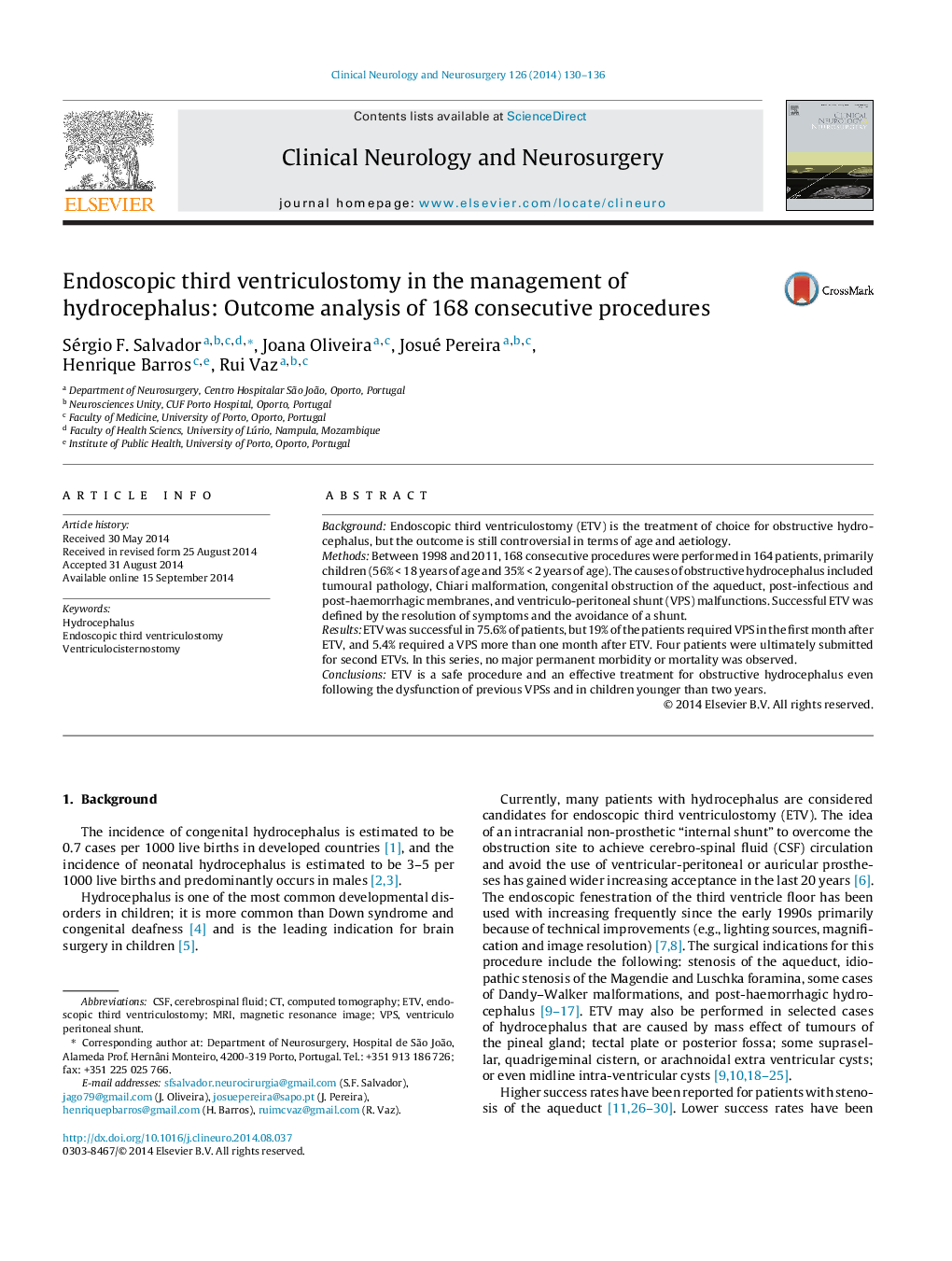| کد مقاله | کد نشریه | سال انتشار | مقاله انگلیسی | نسخه تمام متن |
|---|---|---|---|---|
| 3040023 | 1579696 | 2014 | 7 صفحه PDF | دانلود رایگان |
• Update information about centre and surgeon experience, and obstructive criteria.
• Justify the inclusion of some post-infectious and post-haemorrhagic cases.
• Define radiological criteria of obstructive hydrocephalus and ETV failure.
• Comment about choroid plexus cauterization.
BackgroundEndoscopic third ventriculostomy (ETV) is the treatment of choice for obstructive hydrocephalus, but the outcome is still controversial in terms of age and aetiology.MethodsBetween 1998 and 2011, 168 consecutive procedures were performed in 164 patients, primarily children (56% < 18 years of age and 35% < 2 years of age). The causes of obstructive hydrocephalus included tumoural pathology, Chiari malformation, congenital obstruction of the aqueduct, post-infectious and post-haemorrhagic membranes, and ventriculo-peritoneal shunt (VPS) malfunctions. Successful ETV was defined by the resolution of symptoms and the avoidance of a shunt.ResultsETV was successful in 75.6% of patients, but 19% of the patients required VPS in the first month after ETV, and 5.4% required a VPS more than one month after ETV. Four patients were ultimately submitted for second ETVs. In this series, no major permanent morbidity or mortality was observed.ConclusionsETV is a safe procedure and an effective treatment for obstructive hydrocephalus even following the dysfunction of previous VPSs and in children younger than two years.
Journal: Clinical Neurology and Neurosurgery - Volume 126, November 2014, Pages 130–136
